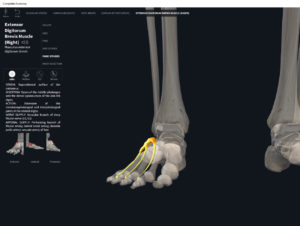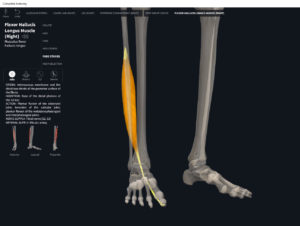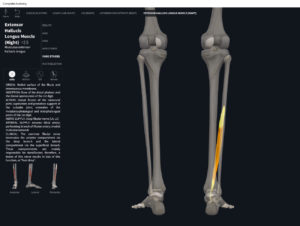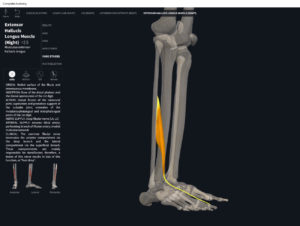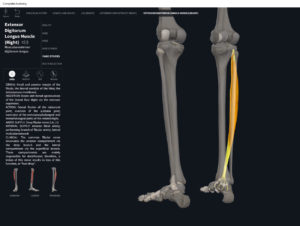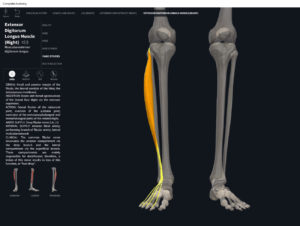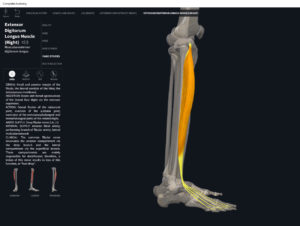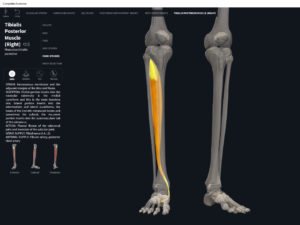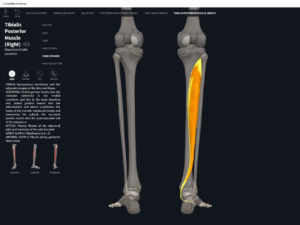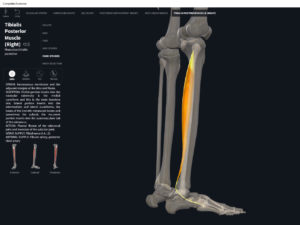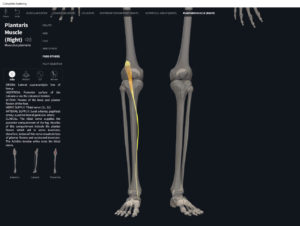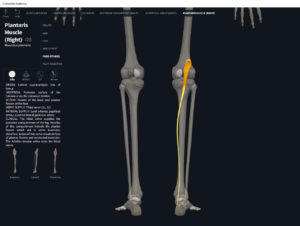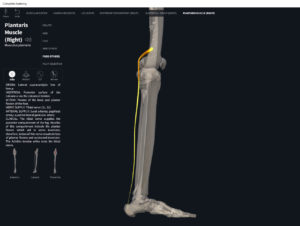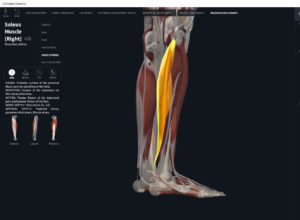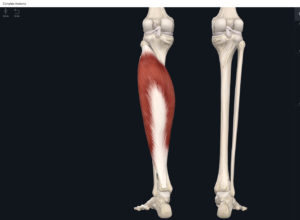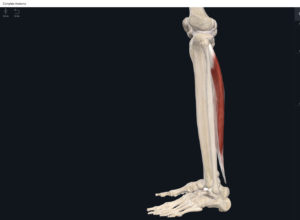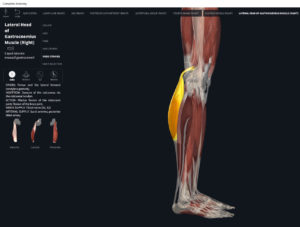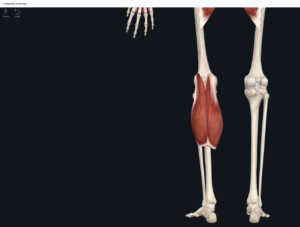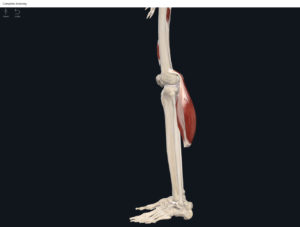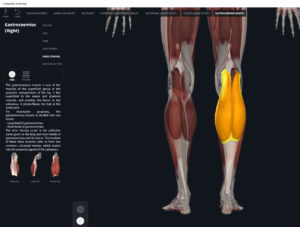Anatomy & Physiology: Muscles—Extensor Hallucis Brevis.
Structure.
- Origin: dorsal surface of calcaneus.
- Insertion: dorsal surface of big toe.
Function.
- Concentric action: extend big toe at MTP.
- Reverse mover action: extend metatarsal of big toe at MTP.
- Eccentric action: controls/restrains/decelerates flexion of MTP of big toe.
- Isometric action: stabilizes big toe MTP joint.
- Innervation: deep fibular (peroneal) nerve.
- Arterial supply: dorsalis pedis artery.
Clinical Significance.
References
Biel, A. (2015). Trail guide to the body: A hands-on guide to locating muscles, bones and more.
Clark, M., Lucett, S., Sutton, B. G., & National Academy of Sports Medicine. (2014). NASM essentials of corrective exercise training. Burlington, MA: Jones & Bartlett Learning.
Jenkins, G., & Tortora, G. J. (2012). Anatomy and Physiology: From Science to Life, 3rd Edition International Stu. John Wiley & Sons.
Muscolino, J. E. (2017). The muscular system manual: The skeletal muscles of the human body.


